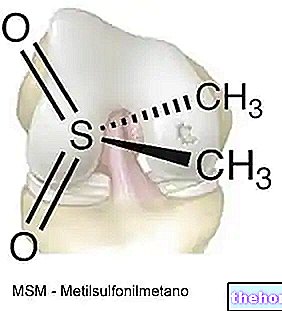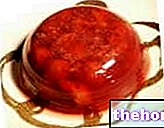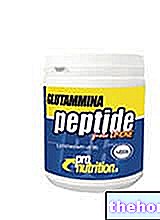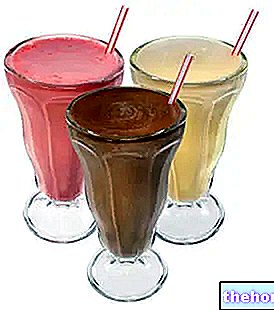
Calories
Unfortunately, many consumers are seduced by misleading advertisements such as the clear reference to the reduced calorie content that appears on the label.
In reality, if we examine the ingredients better we realize that this characteristic depends only on the extremely low weight of the food.
Fats are very energetic nutrients since each gram develops approximately nine Kcal. Therefore 12 grams of fat would be enough, the equivalent of an abundant tablespoon of olive oil to exceed the 100 Kcal threshold.
Sugars should be replaced with low calorie sweeteners. In fact, a few grams would be enough to significantly raise the calorie content of the bar.The same goes for chocolate, for which 15 grams would be enough to cover the entire energy intake (80 Kcal).
The consumer must therefore refer exclusively to the nutritional values per 100 grams of product. In this way, you will notice that the calorie content is in many cases similar to that of traditional snacks.
Obviously, if a bar weighs only 20 grams it will inevitably have a low calorie content (eg 85 Kcal). However, if we read the nutritional values better or do a quick calculation in mind, we realize that the calories per 100 grams are 425, practically the same as the classic snacks.
A diet bar, to be considered such, should not in any case exceed 250-300 Kcal per 100 grams.
Satiating Power
For some bars (protein, zone, etc.) it is high even if not immediately; for others it is very low. It essentially depends on the content of fats, proteins and fibers of the food.
While an apple, thanks to the presence of soluble fiber (pectin), is able to bind water and increase the content of the intestinal lumen by slowing down digestion, carbohydrate-based bars do not have the same properties. For this reason it is advisable to prefer those with a fiber content higher than 5% by drinking water shortly after their intake.
On the contrary, it is good to avoid hyperglucidic bars, definitely not very filling, as well as expensive foods. Therefore, the more "commercial" bars that are common, especially on supermarket shelves, must be discarded. This is the case, for example, of some cereal-based bars whose manufacturers try to exploit the good reputation of this category of foods to better market their products. It is a pity that a high calorie content is also associated with a low satiating power, due to the lack of fibers, fats and proteins.
Various aromas
To improve the palatability of dietary bars, artificial flavors are often added that simulate the taste of particular foods. Generally the safest products from this point of view are those with a vanilla flavor which require, among other things, the addition of a smaller quantity of On the other hand, fruit-flavored products should be avoided, unless they are bars in which natural pieces of dehydrated fruit are actually present.
Truly excellent are the carob-based diet bars. The flour of this food has in fact a taste similar to chocolate but is much less caloric and rich in fiber.
Fat
Fats are the real Achilles heel of most of the bars on the market. Just take a quick look at the ingredients to realize that in many cases totally or partially hydrogenated vegetable fats are present. Once this feature was masked behind the simple words "margarine" or "vegetable fats", but from 13/12/2014 it is mandatory to specify the use of hydrogenated oils if they are actually used.
Even if the label contains ingredients such as "palm oil" or "palm kernel oil", it is still in the presence of a "harmful" food, as it is rich in saturated fats. It is better if coconut oil is used. , richer in medium-chain fats (MCTs) and relatively low in long-chain saturated fatty acids.
Until recently, only generic terms such as "vegetable oils", "mix of tropical oils and fats" or "vegetable fats" could be reported on the label; from 13/12/2014 it is instead mandatory to report also the vegetable origin of the single oils used (eg olive oil, sunflower oil, etc.).
When using "noble" vegetable oils, such as olive, hemp, flax or sesame oils, the nutritional qualities of the bar are much better than products containing tropical oils and / or hydrogenated vegetable fats.
The use of fish oil is very interesting, used above all in the production of area bars, since it also brings a share of polyunsaturated fatty acids.
Today, bars are also marketed in which the use of NON hydrogenated vegetable fats is clearly advertised. Without a doubt, these are better products than those that use them, but still far from being considered healthy.
Vitamins
The addition of vitamins increases the quality of the product in the eyes of the consumer who should pay close attention to the other ingredients as well, without being too distracted by misleading advertisements.
, preparing a nutritionally balanced and tasty protein bar, without exceeding with simple fats and sugars, and - why not - saving some money. Alice, the personalcooker of MypersonaltrainerTv, explains in detail how to prepare these fabulous homemade protein bars.
Protein bars with oat and cocoa flakes
- Go to the Video Page
- Go to the Video Recipes Section
- Watch the video on youtube
Nutritional values per 100 grams
A medium-sized apple (200 g) together with a handful of dried fruit (15 g) brings about 170 Kcal. Also in this case it is a practical and balanced snack from an energy point of view.
The choice of dried fruit should fall on that marketed with its own shell, if this is eliminated the product acquires practicality but also a series of artificial antioxidants necessary to avoid rancidity and oxidation of fats.
A small sandwich with a few lettuce leaves and some lean sliced is another example of a healthy and balanced snack.
Even an orange juice, although devoid of proteins and fats, due to the high intake of fiber, vitamins and antioxidants, could be a valid alternative for a quick snack at the bar.
Resume reading from the beginning: Diet Bars: Types and CharacteristicsOther Related Articles:
- Diet and Breakfast
- Diet and Canteen
















.jpg)











